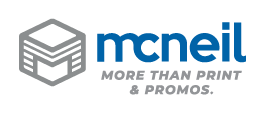Offset Printing
Offset Printing: A Quick Guide
Offset printing, also known as lithography, is a widely-used commercial printing method. It's known for its high-quality, cost-effectiveness, and versatility.
Offset printing is a powerful tool for creating high-quality, cost-effective printed materials, especially when dealing with larger quantities and projects that require precise color matching and specialty inks. If you have specific needs or projects, our very knowledgable Account Managers would love to discuss those needs with you and give you a custom quote. Click Here for a quote!
How It Works:
Plate Preparation:
• Your design is transferred onto metal plates.
• Each color in your design gets a separate plate (CMYK for full-color prints).
Ink and Water Don't Mix:
• The plates are dampened with water; areas without the image attract water.
• The image areas repel water and attract ink.
Transfer to Blanket Cylinder:
• The inked image is transferred from the plate to a rubber blanket cylinder.
From Blanket to Paper:
• The image is then offset from the blanket cylinder onto the paper.
Drying:
• The printed sheets pass through drying systems to set the ink.
Color Precision and Specialty Options:
Color Matching:
• Offset printing involves creating print plates that press different colors of ink onto the paper.
• Each roller in the press contains one of the four main colors - cyan, magenta, yellow, and black.
• Ideal for color matching, as Pantone (PMS) colors can be mixed precisely, maintaining brand identity.
Specialty Inks:
• Useful for specialty inks like metallic or transparent inks, allowing for unique and eye-catching prints.
Advantages of Offset Printing:
High Quality:
• Produces sharp, clean, and detailed images. • Ideal for large quantities and intricate designs.
Cost-Effective for Bulk Orders:
• Economical for large print runs due to initial setup costs.
Versatility in Paper and Finishes:
• Works well with various paper types and finishes. • Options for coatings like varnish or UV for extra protection.
Consistent Color Reproduction:
• Precise color control with the CMYK color model. • Pantone (PMS) color mixing for maintaining brand identity.
Wide Range of Applications:
• Used for magazines, brochures, packaging, and more.
Ideal for Larger Projects:
• Offset printers can handle larger sheets of paper than a digital press, making it ideal for expansive projects.
Considerations:
Setup Time:
• Initial setup takes time but becomes more cost-effective for larger quantities.
Not Ideal for Short Runs:
• May be less cost-effective for small print jobs.
Environmentally Friendly Options:
• Soy-based inks and eco-friendly papers are available.



